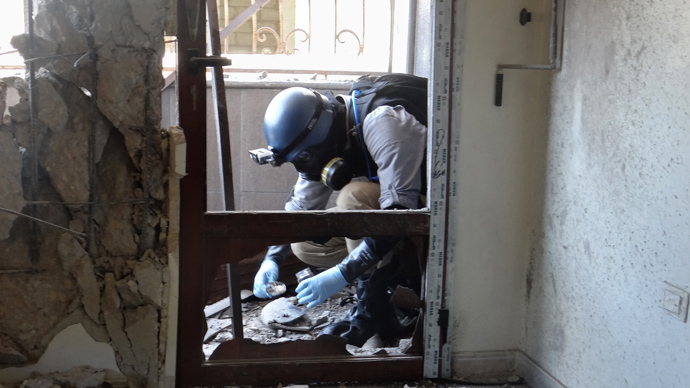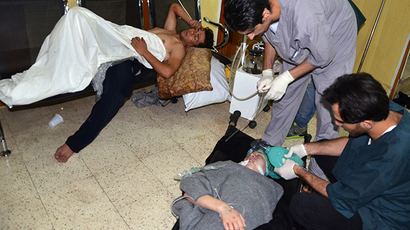MIT study of Ghouta chemical attack challenges US intelligence

A new MIT report is challenging the US claim that Assad forces used chemical weapons in an attack last August, highlighting that the range of the improvised rocket was way too short to have been launched from govt controlled areas.
In the report titled
“Possible Implications of Faulty US Technical Intelligence,”
Richard Lloyd, a former UN weapons inspector, and Theodore
Postol, a professor at the Massachusetts Institute of Technology
(MIT), examined the delivery rocket’s design and calculated
possible trajectories based on the payload of the cargo.
The authors concluded that sarin gas “could not possibly have
been fired at East Ghouta from the ‘heart’, or from the Eastern
edge, of the Syrian government controlled area shown in the
intelligence map published by the White House on August 30,
2013.”
Based on mathematical calculations, Lloyd and Postol estimate the
rocket with such aerodynamics could not travel more than 2
kilometers. To illustrate their conclusion, the authors included
the original White House map that depicted areas under Assad
control and those held by the opposition. Based on the firing
range and troop locations on August 21, the authors conclude that
all possible launching points within the 2 km radius were in
rebel-held areas.

“This mistaken intelligence could have led to an unjustified US
military action based on false intelligence. A proper vetting of
the fact that the munition was of such short range would have led
to a completely different assessment of the situation from the
gathered data,” the report states.
The authors emphasize that the UN independent assessment of the
range of the chemical munition is in “exact agreement”
with their findings.
The report goes on to challenge the US Secretary of State’s key
assessments of the chemical attack that he presented to the
American people on August 30th and to the Foreign Relations
Committee on September 3rd in an effort to muster a military
attack on Syria.
“My view when I started this process was that it couldn’t be
anything but the Syrian government behind the attack. But now I’m
not sure of anything. The administration narrative was not even
close to reality. Our intelligence cannot possibly be
correct,” Postol told McClatchy publication.

“The Syrian rebels most definitely have the ability to make
these weapons,” he said. “I think they might have more
ability than the Syrian government.”
It also remains a mystery why the particular type of rocket that
was used in the attack was not declared by the Syrian government
as part of its chemical weapons arsenal when it agreed to destroy
its chemical weapons and their delivery methods. OPCW inspectors
charged with implementing the agreement also did not discover
such a rocket in possession of government forces.
Syria agreed to the destruction of its chemical weapons through a
deal brokered by Russia and the US after a sarin gas attack on
August 21. Western nations blamed the deadly attack on President
Bashar Assad’s forces, while Damascus accused the rebels for the
incident. The UN fact-finding mission had no mandate to find out
who carried out the attack.
Under the UN-backed plan, all of the country’s declared 1,290
tons of toxic agents should be destroyed by June 30. Initially,
the first batch of the most dangerous materials was to be moved
out of Syria on December 31.
However, the deadline was missed because of the ongoing war in
Syria and technical issues. It was only on January 7 that
“priority chemical materials” left the Syrian port of Latakia on
a Danish ship for international waters.














